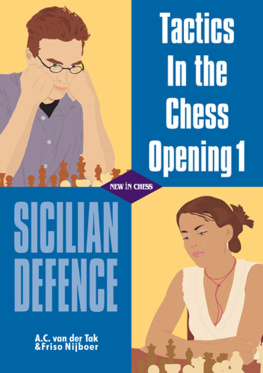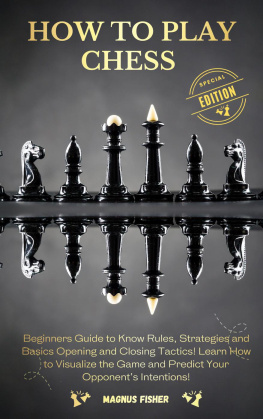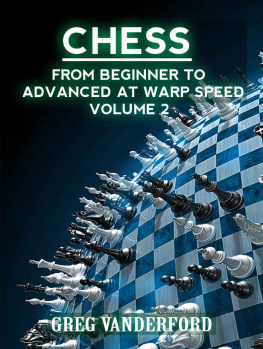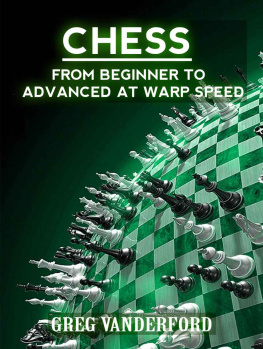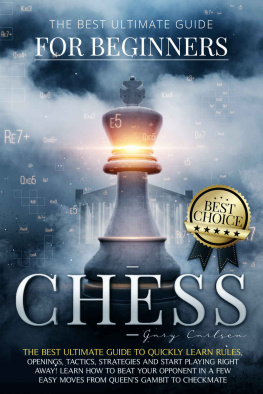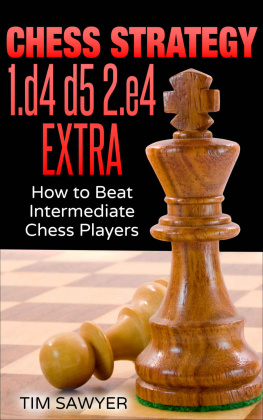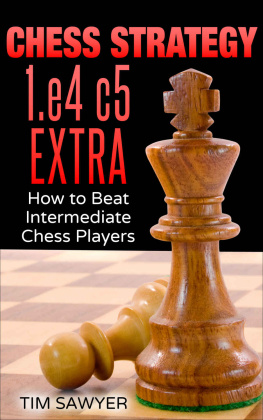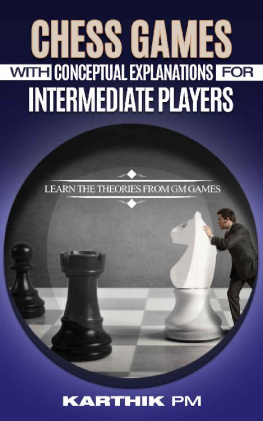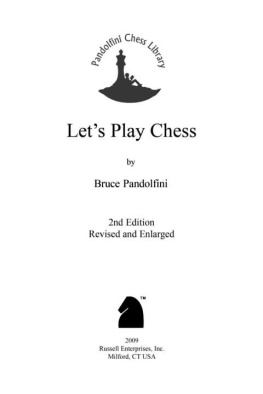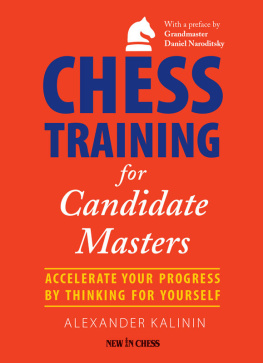GARY ALAN FINE is John Evans Professor of Sociology at Northwestern University. He is the author of numerous books, including Difficult Reputations: Collective Memories of the Evil, Inept, and Controversial; Authors of the Storm: Meteorologists and the Culture of Prediction; Everyday Genius: Self-Taught Art and the Culture of Authenticity; With the Boys: Little League Baseball and Preadolescent Culture; and Shared Fantasy: Role-Playing Games as Social Worlds, all published by the University of Chicago Press.
The University of Chicago Press, Chicago 60637
The University of Chicago Press, Ltd., London
2015 by The University of Chicago
All rights reserved. Published 2015.
Printed in the United States of America
24 23 22 21 20 19 18 17 16 15 1 2 3 4 5
ISBN-13: 978-0-226-26498-1 (cloth)
ISBN-13: 978-0-226-26503-2 (e-book)
DOI : 10.7208/chicago/9780226265032.001.0001
Library of Congress Cataloging-in-Publication Data
Fine, Gary Alan, author.
Players and pawns : how chess builds community and culture / Gary Alan Fine.
pages cm
Includes bibliographical references and index.
ISBN 978-0-226-26498-1 (hardcover : alk. paper) ISBN 978-0-226-26503-2 (e-book) 1. ChessPsychological aspects. 2. ChessSocial aspects. 3. ChessTournaments. I. Title.
GV 1448. F 55 2015
794.1019dc23
2014033248
This paper meets the requirements of ANSI / NISO Z39.481992 (Permanence of Paper).
A Tournament Revealed
On a chilly Friday the week before Christmas, 150 adults and children drift into a pleasant if undistinguished Sheraton hotel in Atlantic City to spend the weekend in common cause. The diversity is impressive. First graders mingle with octogenarians. Present are college students, doctors, and those who, to judge from their clothing, are homeless. Some are dressed in coats and ties, and a few reveal their admiration for hip-hop; many wear T-shirts and jeans. Attendees are black, Hispanic, white, and Asian. A few are women. This is the opening of the inaugural Atlantic City International Chess Tournament (Imagine Your Dreams on the Board and on the Boardwalk). These gamers play six rounds over three days, and in the gaps in the schedule some stroll to local casinos, trying their skills in poker, a pastime at which many strategically minded chess players excel.
For each tournament game, a player is allocated two hours, although those with digital clocks receive 115 minutes with a five-second delay before the clock starts counting, allowing more time in the endgames rush. The organizers rented a ballroom for the formal games and a smaller skittles room for informal play. Some of those decamped in the skittles room do not enter the tournament, finding the bets laid down in street chess more lucrative. A few men are chess hustlers like those at Washington Square. Organizers have also set up a bookstore, selling magazines, chess sets, and trinkets, and there is a tournament room where the organizers establish game pairings and resolve disputes over rules and judges decisions that inevitably arise.
This is the tournaments inaugural year, and I have been permitted to watch the planning from the start. The organizers, two well-established They dream of five hundred and fear one hundred. Winter storms hold off, but the timing a week before Christmas dampens attendance. Choosing Atlantic City, a rough-hewn gambling town, might have dissuaded cautious parents. The final numbers, slightly more than 160, are a real disappointment and a financial blow (the deficit is slightly above $20,000, not pocket change), given the prize money and advertisements. The organizers revel in dark humor about their misfortune, speculating on the responses of their families. Fortunately players book enough rooms to meet the contractual obligations with the hotel, so the Sheraton does not levy a penalty. The tournament promises $50,000 based on five hundred players, one of the larger prize funds of the year, but, as at many tournaments, the organizers carefully promise only $30,000 if the number of entries does not meet expectations. The tournament was not held the following year.
But tournaments are not about accounting; they are about community, friendship, and rough competition. On Thursday evening, the organizers have arranged a simul (simultaneous demonstration) with Gata Kamsky, a challenger for the world championship and the second-highest-rated American player. In a simul, a chess star plays all comers, making rapid moves as he visits each board in turn, giving less talented opponents time to consider their moves. Perhaps as a result of the low attendance, Kamsky, sometimes seen as shy or aloof, jokes, gives personal advice to each of his eight opponents, and describes classic games. He is charming, and his opponents clearly enjoy the attention, even though the low attendance means that he will not receive much for the evening; he retains all registration fees for the event. Tonight there are no upsets, and Kamsky triumphs in his competition and chooses to play in the tournament. Simuls are a means by which lower-level players can touch the stars, and these events are a drawing card for many players. One can play (and lose to) a man who might someday be crowned the best in the world. World champions such as Garry Kasparov and Anatoly Karpov fill their simuls, but Kamsky is not a sufficient draw to encourage players to stay an extra night on the Jersey shore, even if rooms are a modest ninety-nine dollars.
Most players arrive on Friday morning as the communal feeling slowly builds. The first game starts on time at 11:00 a.m. Between rounds attendees greet friends, gossip about mutual acquaintances, review games with past opponents (sharing disappointments and startling victories), play rapid and informal contests, sightsee, or study. Many parents bring children, and some analyze the childrens games, generally with good grace. Some children travel with siblings or school friends, resulting in running and wrestling, but no more than mild boisterousness. Still, this is an adult tournament; most children have attended similar tournaments and conduct themselves with dignity.
Once chess tournaments were infamous for delayed rounds, The major complaints this weekend involve color assignment, although some players object to playing those with greater or fewer victories. At the Atlantic City tournament, complaints only occur, as they often do, prior to the final round when the results directly affect the final outcome.
Most tournaments are not a single event, but, as in the case of the Atlantic City tournament, multiple tournaments run in parallel. Each is limited to players of a particular strength level. The elite competition is the open section for the top players, although anyone can register. When other players complete their games, they drift to the tables in the open section, where they watch the marquee players. Other sections are for players with ratings under 2200, under 2000, under 1800, under 1600, under 1400, and under 1200. Open section matchups are based on ratings from the World Chess Federation; the others use ratings from the United States Chess Federation, figured differently and slightly more generous. Thirty-three players participate in the open division, including eight grandmasters (players with a World Chess Federation rating over 2500 and at least three tournament norms, or strong results) and six international masters (excellent players who have not yet achieved sufficient ratings and norms to be grandmasters). The outcome is as expected, as the two top-rated grandmasters, Gata Kamsky and the Dutch star Loek van Wely, tie for first (splitting $3,600). Often chess tournaments conclude without a single champion. There are no major upsets, but players can watch chess at its highest level, comparable to a contest at an elite international tournament. Their prizes are neither glorious nor insignificant. As grandmasters they dont pay an entry fee, but a fee is deducted from their winnings (seven of the eight grandmasters win money this weekend). Because of how the rounds are paired, Kamsky and van Wely played in the third round, rather than in a climatic sixth round, although the final round was tense, as it was clear that the order of finish would be determined by these contests. However, at some tournaments the two top players face each other during the final round for the cash prize and bragging rights. On these occasions the table is surrounded by those less gifted whose games have concluded. The top six boards at which those players with the most wins and highest ratings compete are set on individual tables set apart from the other boards, which are placed on long tables. This supports the concentration of top players. Yet, at the end of the final round attendees crane to see the top boards, edging as close as possible. This is where the action is. As the clocks tick down in the deciding game at some tournaments, the players rush to move with a whir of hands and a clattering of pieces, but more often these games end anticlimactically with a resignation by one player who can see the end in sight or an agreement to a gentlemanly draw, dividing the prize.


